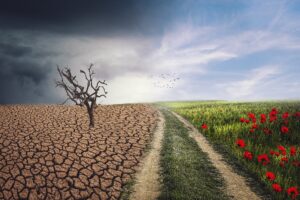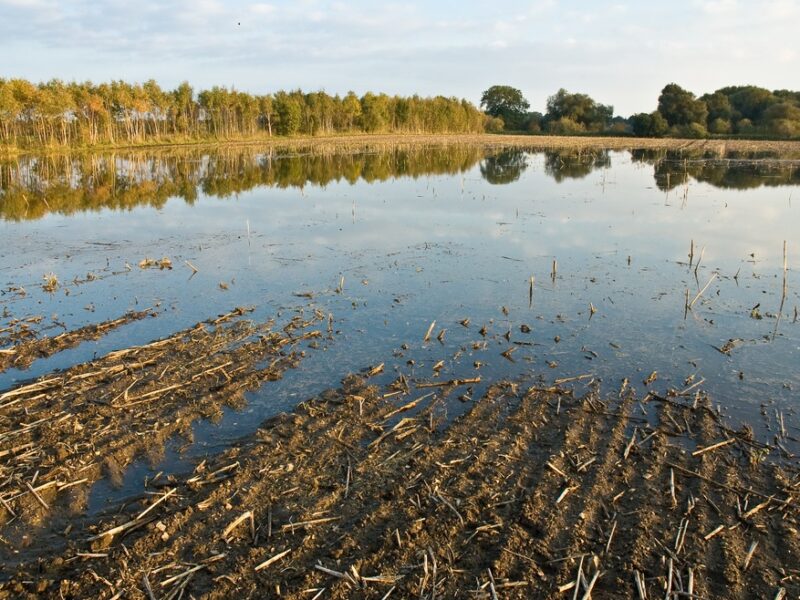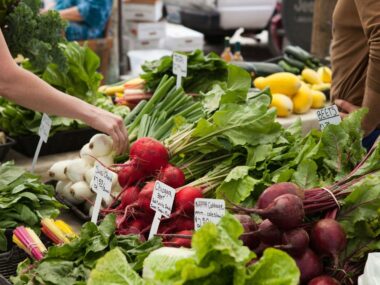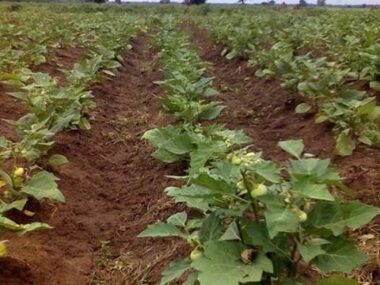Climate change is one of the most pressing global challenges, affecting various aspects of human life and the environment. Agriculture, a sector intrinsically tied to weather and climate, is particularly vulnerable. The impacts of climate change on agriculture are complex and multifaceted, influencing crop yields, livestock productivity, soil health, and water availability. This article explores the significant ways in which climate change is affecting agriculture and the strategies farmers are adopting to mitigate these impacts.

1. Changes in Temperature and Growing Seasons
One of the most direct effects of climate change is the alteration of temperature patterns. Rising average temperatures and increased frequency of extreme heat events can have several consequences for agriculture.
Key Impacts:
- Crop Yields: Higher temperatures can accelerate the growth cycle of crops, potentially reducing the time for photosynthesis and thus lowering yields. For example, wheat and corn yields are particularly sensitive to temperature increases.
- Growing Seasons: Warmer temperatures can extend the growing season in some regions, allowing for multiple harvests. However, this can also lead to increased water demand and pressure on soil nutrients.
- Heat Stress on Livestock: Livestock are susceptible to heat stress, which can reduce milk production, growth rates, and reproductive performance.
Adaptation Strategies:
- Heat-Resistant Crop Varieties: Developing and planting crop varieties that are more tolerant to higher temperatures.
- Shade Structures for Livestock: Providing shaded areas and cooling systems to protect livestock from heat stress.
- Adjusted Planting Schedules: Shifting planting and harvesting times to align with new temperature patterns.
2. Changes in Precipitation Patterns
Climate change is altering precipitation patterns, resulting in more intense and frequent droughts and floods. These changes can severely disrupt agricultural activities.
Key Impacts:
- Droughts: Extended periods of drought can lead to water scarcity, affecting crop irrigation and livestock hydration. This is particularly challenging in arid and semi-arid regions.
- Floods: Increased rainfall and flooding can damage crops, erode soil, and wash away essential nutrients.
- Soil Moisture: Irregular precipitation can lead to either too much or too little soil moisture, both of which can negatively affect plant growth.
Adaptation Strategies:
- Drought-Resistant Crops: Breeding and adopting crops that can withstand prolonged dry conditions.
- Improved Irrigation Systems: Implementing efficient irrigation techniques, such as drip irrigation, to conserve water.
- Water Harvesting: Constructing systems to capture and store rainwater for use during dry periods.
3. Increased Frequency of Extreme Weather Events
Climate change is associated with an increase in the frequency and severity of extreme weather events, including hurricanes, typhoons, and hailstorms.
Key Impacts:
- Crop Damage: Extreme weather can cause immediate and severe damage to crops, leading to significant yield losses.
- Infrastructure Damage: Farming infrastructure, including barns, greenhouses, and irrigation systems, can be destroyed by severe storms.
- Soil Erosion: Heavy rainfall and strong winds can lead to soil erosion, reducing the land’s fertility and agricultural productivity.
Adaptation Strategies:
- Protective Structures: Building stronger, more resilient structures to protect crops and livestock from extreme weather.
- Soil Conservation Practices: Implementing practices such as contour plowing, terracing, and planting cover crops to reduce soil erosion.
- Diversification: Diversifying crops and income sources to reduce the financial risk associated with extreme weather events.
4. Pest and Disease Proliferation
Warmer temperatures and changing precipitation patterns can create favorable conditions for pests and diseases, posing a significant threat to agriculture.
Key Impacts:
- Pest Infestations: Higher temperatures can expand the range and breeding cycles of pests, leading to more frequent and severe infestations.
- Plant Diseases: Increased humidity and warmer temperatures can promote the spread of plant diseases, such as fungal infections.
- Livestock Diseases: Changes in climate can also affect the prevalence of diseases in livestock, impacting their health and productivity.
Adaptation Strategies:
- Integrated Pest Management (IPM): Adopting IPM practices that combine biological, cultural, and chemical tools to manage pests effectively.
- Disease-Resistant Varieties: Planting crop varieties that are resistant to prevalent diseases.
- Regular Monitoring: Implementing regular monitoring and early warning systems to detect and respond to pest and disease outbreaks promptly.
5. Soil Degradation
Climate change can exacerbate soil degradation through increased erosion, nutrient leaching, and changes in soil organic matter.
Key Impacts:
- Erosion: Intense rainfall and wind can lead to significant soil erosion, reducing the land’s fertility.
- Nutrient Leaching: Increased precipitation can cause essential nutrients to leach away from the soil, making them unavailable to plants.
- Soil Organic Matter: Changes in temperature and moisture can affect the decomposition of organic matter, altering soil structure and fertility.
Adaptation Strategies:
- Soil Conservation Techniques: Implementing no-till farming, cover cropping, and crop rotation to maintain soil health.
- Organic Amendments: Adding organic matter, such as compost and manure, to improve soil structure and fertility.
- Erosion Control: Constructing terraces, windbreaks, and retaining walls to prevent soil erosion.
6. Impact on Water Resources
Agriculture is heavily dependent on water, and climate change poses significant challenges to water availability and quality.
Key Impacts:
- Water Scarcity: Reduced rainfall and increased evaporation rates can lead to water shortages, affecting irrigation and livestock needs.
- Water Quality: Increased runoff from heavy rains can contaminate water sources with sediments, pesticides, and fertilizers.
- Aquifer Depletion: Over-extraction of groundwater for irrigation in response to reduced surface water availability can lead to aquifer depletion.
Adaptation Strategies:
- Efficient Water Use: Adopting water-efficient practices, such as drip irrigation and scheduling irrigation based on weather forecasts.
- Rainwater Harvesting: Collecting and storing rainwater for agricultural use.
- Water Recycling: Recycling wastewater for irrigation purposes.
Conclusion
The impact of climate change on agriculture is profound and far-reaching, posing significant challenges to farmers worldwide. However, through innovation, adaptation, and sustainable practices, farmers can mitigate some of these impacts and continue to produce food efficiently. By adopting heat-resistant crops, improving water management, implementing soil conservation techniques, and embracing integrated pest management, the agricultural sector can build resilience against the adverse effects of climate change. Continued research, investment in sustainable practices, and support for farmers are essential to ensure a stable and secure food supply in the face of a changing climate.










